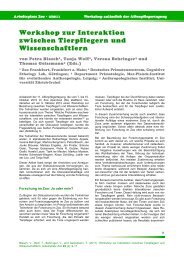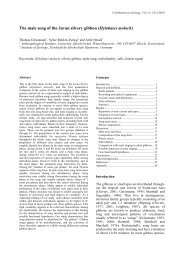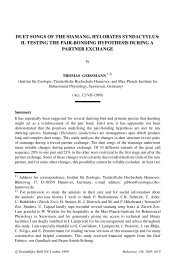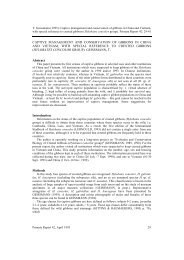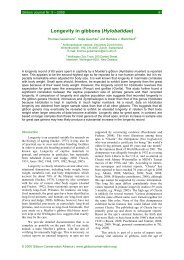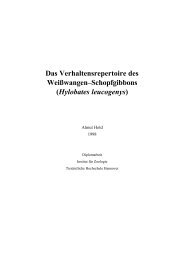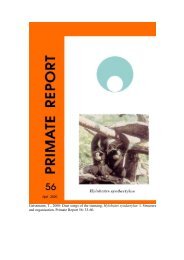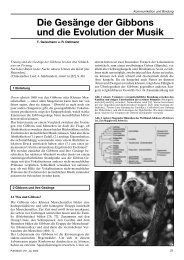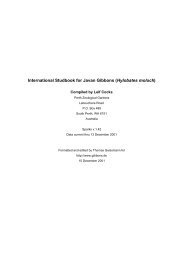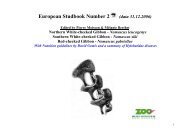How To Tape-Record Primate Vocalisations - Gibbon Research Lab
How To Tape-Record Primate Vocalisations - Gibbon Research Lab
How To Tape-Record Primate Vocalisations - Gibbon Research Lab
- No tags were found...
Create successful ePaper yourself
Turn your PDF publications into a flip-book with our unique Google optimized e-Paper software.
Geissmann: <strong>How</strong> to <strong>Tape</strong>-<strong>Record</strong> <strong>Primate</strong> <strong>Vocalisations</strong> 5All these technologies use sound compression algorithms discarding sound detailswhich appear to be non-audible. For instance, MiniDisc technology incorporates inputfiltering and data compression strategies deliberately designed to distort the signal in subtleways which makes the signal more difficult to analyse and impossible for accurate frequencyrelatedmeasurements. It also leads to perceptible distortion if multiple copies are made. Anysuch technology will change (i.e. degrade) the sound you are recording and make yourrecordings unsuitable for sound analysis.What to buy - where is the future?Reel-to-reel machines are almost gone. It is also obvious from changes in the productlists of the major producers of audio equipment that both analog audio cassette recorders andDAT are on their way out. Whereas the analog cassettes will be still around for years to come,the DAT technology never had to build up an equally large user base and may disappearfaster. Only few good portable machines of either technology are still being sold, mainly forspecialists, and prices for these machines will probably go up as the market dries up. Thefuture will be in the digital media. Unfortunately, currently popular or announcedtechnologies such as MiniDisc, MP3 or MP4 are not an option for bioacoustic analyses.Direct-to-harddisk recording may be the option of the future, but no easily manageable androbust solution is available for long-term use in the rain forest. For the time being, at least,this writer is sticking to analog recording using audio cassettes.Microphones and parabolic reflectorsIf possible, use a directional microphone or a parabolic reflector (also called parabola).This considerably improves sound collection in nature by either attenuating unwantedambient noise and sounds from other directions (directional microphones) or by givingemphasis to the sounds coming frontally (parabolic reflectors).Directional microphones are the most useful in bioacoustic field recordings. Thedirectionality of a microphone is usually represented by a polar diagram, i.e. a graphicrepresentation of the sensitivity of the microphone with respect to the frequency and the angleof incidence of the sound. Typically, directionality increases with increasing frequency, i.e.decreasing wavelength. There are three basic directional patterns: omnidirectional,bidirectional and unidirectional, or simply directional. The latter type is of interest here.Various names are in use for microphones with various degrees of directionality. Here, I willjust differentiate between shotgun or ultradirectional microphones and semi-directionalmicrophones.



